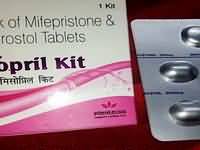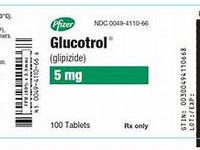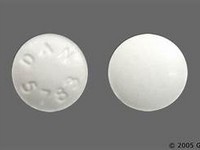Misoprostol

CLINICAL USE
Benign gastric and duodenal ulceration and NSAID associated ulcerationProphylaxis of NSAID induced ulcerationDOSE IN NORMAL RENAL FUNCTION
Treatment: 800 mcg daily in 2 or 4 divided dosesProphylaxis: 200 mcg 2–4 times dailyPHARMACOKINETICS
DOSE IN RENAL IMPAIRMENT
GFR (mL/MIN)
DOSE IN PATIENTS UNDERGOING RENAL REPLACEMENT THERAPIES
IMPORTANT DRUG INTERACTIONS
Potentially hazardous interactions with other drugsADMINISTRATION
Reconstition
–Route
OralRate of Administration
–Comments
–OTHER INFORMATION
Plasma concentrations of misoprostol are generally undetectable due to its rapid metabolic conversion to misoprostol acidDosage adjustment is not usually necessary in patients with varying degrees of renal impairment, even though there is an approximate doubling of half-life, maximum plasma concentration and area under the curve. If renal patients are unable to tolerate it, the dose can be reduced.
See how to identify renal failure stages according to GFR calculation
See how to diagnose irreversible renal disease
Home








